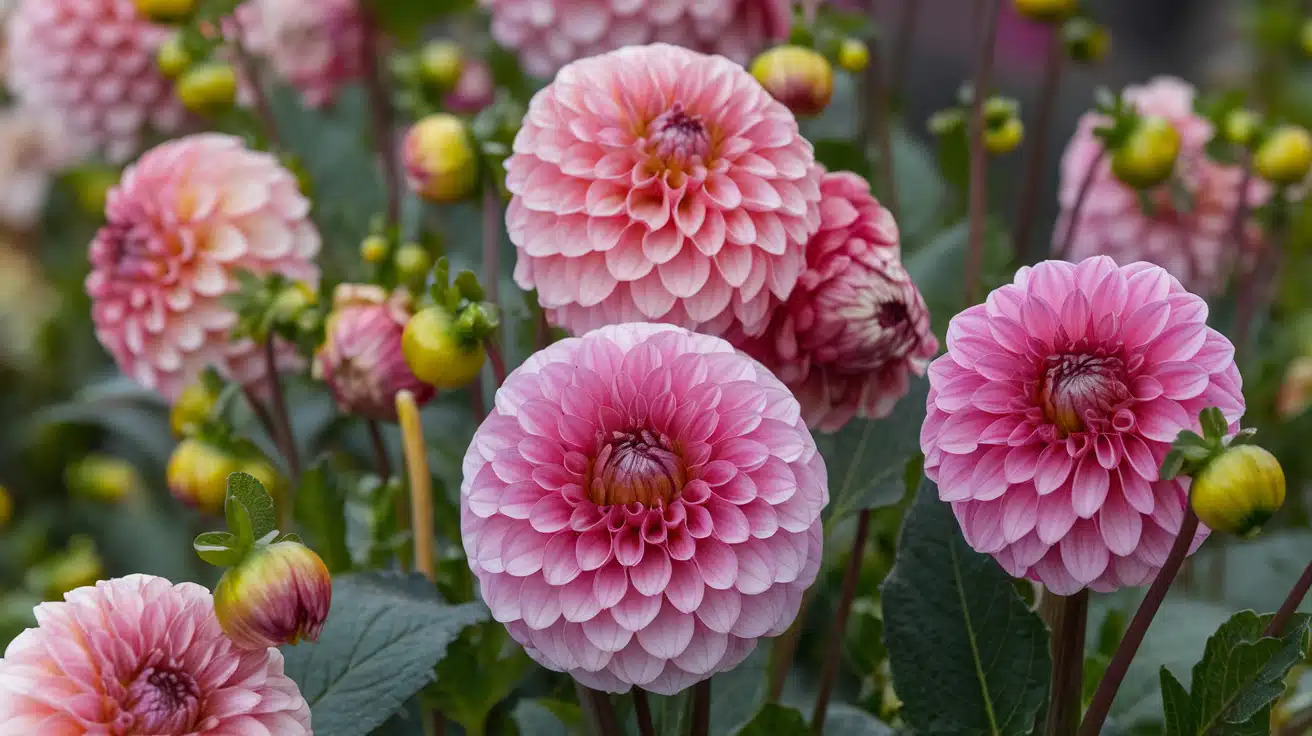Dahlias steal the show in every garden with their gorgeous blooms that last from summer until frost hits.
But here’s what most gardeners don’t realize: these showstoppers are surprisingly easy to grow when you know the right techniques.
While other flowers fade in late summer heat, dahlias are just hitting their stride, producing bigger and more vibrant blooms as temperatures cool.
Whether you want tiny pompom varieties or dinner plate-sized giants, growing healthy dahlias comes down to mastering seven simple steps.
From proper tuber preparation to winter storage, each technique builds on the last to create a garden that neighbors will envy.
Ready to change your garden into a dahlia paradise? Let’s walk through everything you need to know to grow these spectacular flowers successfully.
What Are Dahlias?
Have you ever wondered why dahlias are called the “queen of the autumn garden”? These gorgeous flowers are much more than pretty faces in your flower bed.
Dahlias belong to the sunflower family and come from Mexico’s mountainous regions. They’re not just annual flowers; they grow from tubers that you can save and replant year after year.
What makes them special is their incredible variety. You’ll find tiny pompom types that fit in your palm, dinner plate varieties as big as your head, and everything in between.
The best part? They bloom from summer until the first frost hits. While other flowers start fading in late summer, dahlias are just getting started. They love warm days and cool nights, making them perfect for fall gardens.
|
Fun Facts About Dahlias
|
Now that you know what makes dahlias so special, let’s talk about getting them into your garden successfully.
When and Where to Grow Dahlias?
Now that you know what makes dahlias so special, let’s talk about getting them into your garden successfully. The key to growing healthy, blooming dahlias lies in understanding their timing and location needs.
Best Time to Plant Dahlias
Timing is everything when it comes to dahlias. You’ll want to wait until soil temperatures reach at least 60°F before planting your tubers. This usually happens 2-4 weeks after your last frost date.
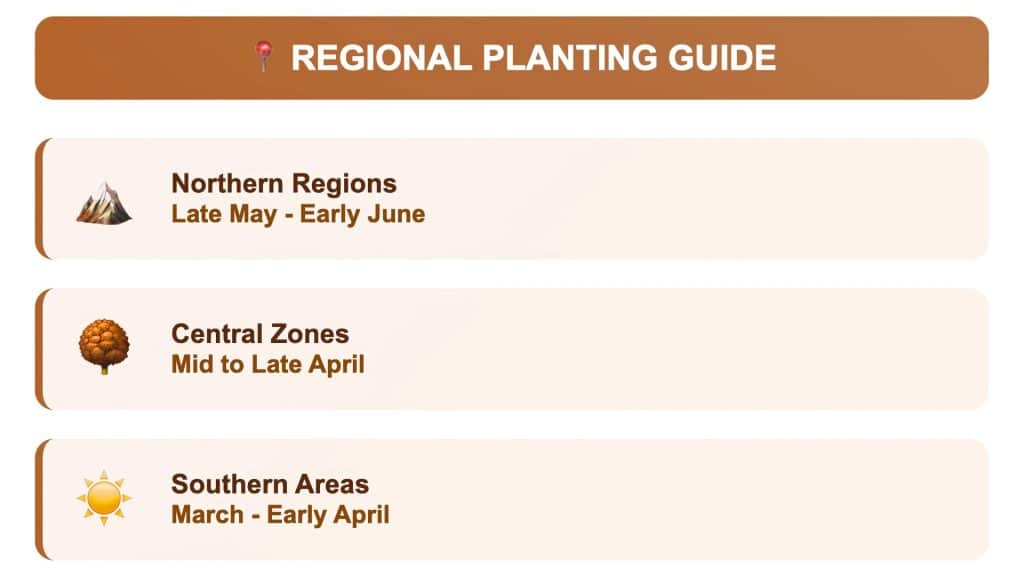
Don’t rush the process. Cold, wet soil will rot your tubers before they even sprout. If you’re eager to get started, you can begin tubers indoors 4-6 weeks before your planting date.
Remember, dahlias are frost-tender plants. Even a light frost will damage the foliage and stop flower production. It’s better to wait an extra week than lose your entire crop to unexpected cold weather.
Choosing the Perfect Location
Location makes or breaks your dahlia success. Getting these three factors right from the start saves you months of frustration and sets up your plants for show-stopping performance.
1. Sunlight Requirements
- At least 6-8 hours of direct sunlight daily
- Morning sun is most important
- Some afternoon shade in very hot climates helps
2. Soil Conditions
- Well-draining soil is essential – soggy conditions kill dahlias
- Rich, loose soil with good organic matter
- Slightly acidic to neutral pH (6.0-7.0)
- Avoid heavy clay or sandy soils without amendments
3. Space Considerations
- Plant tubers 12-18 inches apart for smaller varieties
- Allow 2-3 feet between larger dinner plate types
- Choose areas protected from strong winds
- Ensure good air circulation to prevent disease
Getting the timing and location right sets the foundation for spectacular dahlia blooms. With these basics covered, you’re ready to move on to the actual planting process and watch your garden change.
How to Grow Dahlias: Step-by-Step Guide
Ready to get your hands dirty?
Growing dahlias isn’t complicated, but following the right steps makes all the difference. Let’s walk through the process together, from preparing your tubers to seeing those first beautiful blooms.
Essential Tools
- Sharp knife
- Shovel
- Soil thermometer
- 6-8 foot stakes
- Soft ties
- Pruning shears
Supplies
- Balanced fertilizer
- Low-nitrogen fertilizer
- Mulch
- Storage containers
This covers all the basics for successful dahlia growing from planting to storage.
Step 1: Prepare and Plant Your Tubers
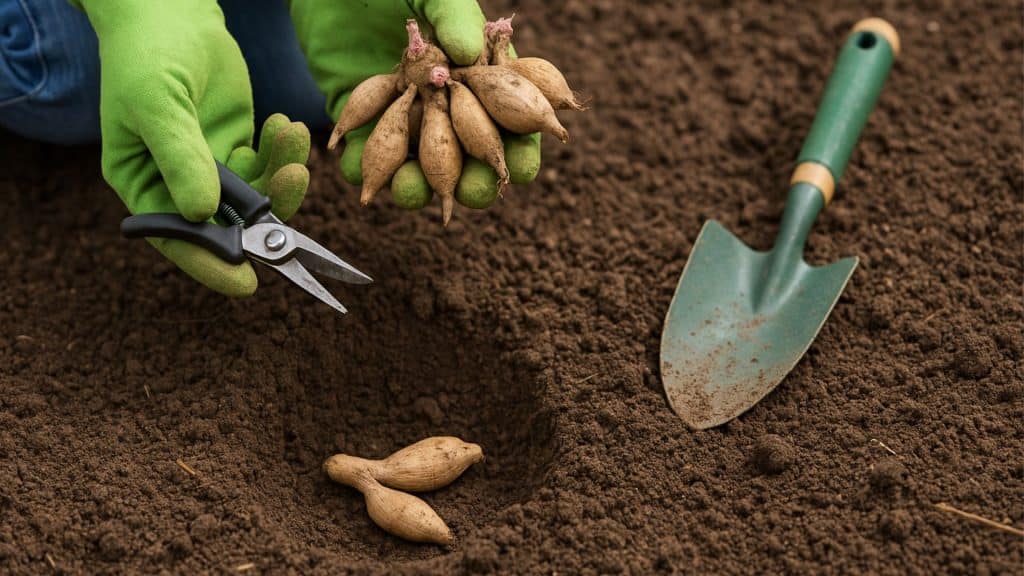
Start by examining your tubers for firmness and visible “eyes” where shoots will grow. Cut large clumps into sections, ensuring each piece has one eye. Let cut surfaces dry for 24 hours before planting.
Dig holes 6-8 inches deep and twice as wide as your tuber. Place tubers horizontally with eyes pointing up. Cover with just 2-3 inches of soil initially, adding more as plants grow taller.
Step 2: Water and Wait for Growth
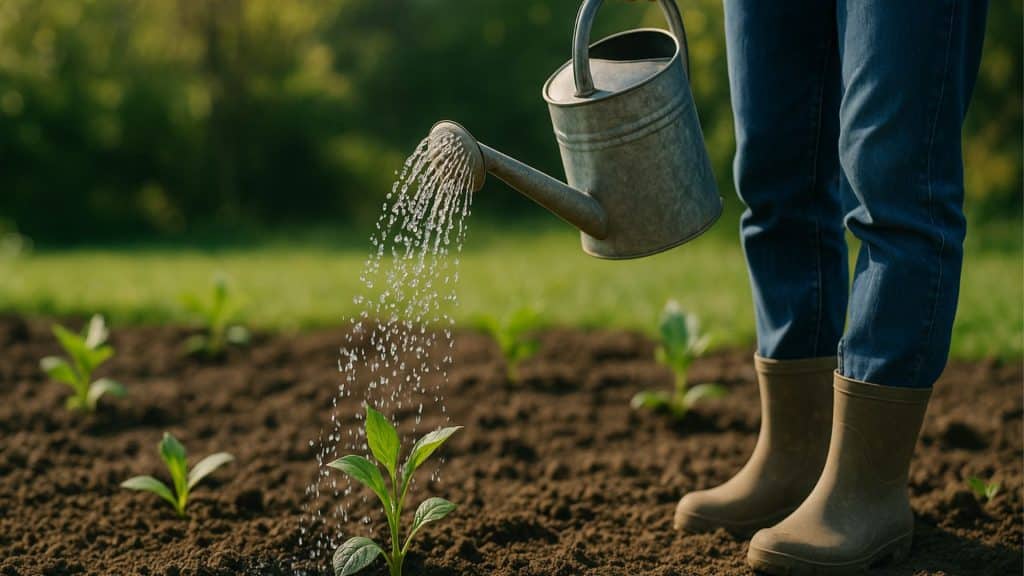
Here’s where many beginners make mistakes – don’t water immediately after planting. Wait until green shoots appear, usually 2-3 weeks later. Watering too early causes tubers to rot in cool, damp soil conditions.
Once growth starts, water deeply but less frequently. Aim for 1-2 inches per week, watering early morning. Keep water off leaves to prevent disease problems that can damage your plants.
Step 3: Install Stakes and Support
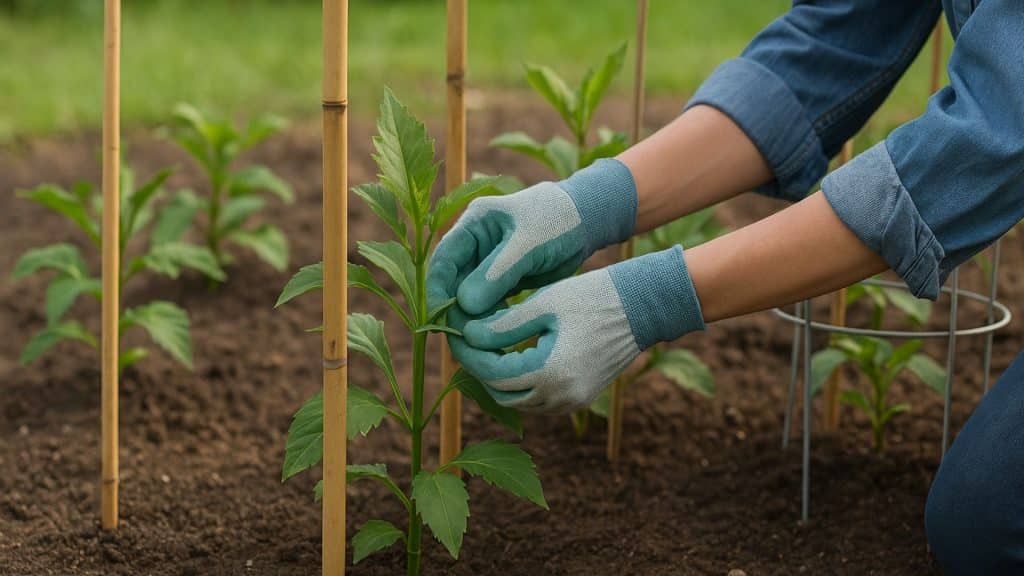
Don’t wait until dahlias are falling over – install support when plants reach 12 inches tall. Drive 6-8 foot stakes 12 inches deep, positioning them 6 inches from plant bases for proper support.
Bamboo stakes work great and look natural in gardens. For shorter varieties, tomato cages provide excellent support. Tie growing stems loosely using soft materials that won’t cut into tender plant tissue.
Step 4: Pinch and Feed for Better Growth
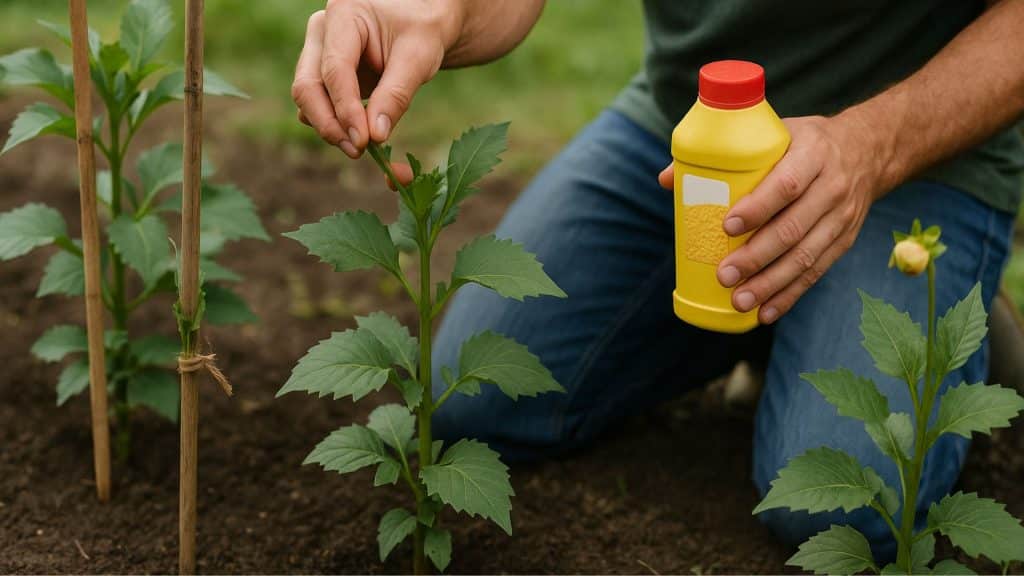
When dahlias reach 12-16 inches tall, pinch out growing tips to encourage bushier growth. Remove the top 2-3 inches of main stems. This creates multiple stems and significantly more blooms throughout the season.
Start feeding when shoots are 6 inches tall using balanced fertilizer monthly. Switch to low-nitrogen, high-phosphorus fertilizer when flower buds form. This promotes better blooming and stronger plant development overall.
Step 5: Maintain Regular Care
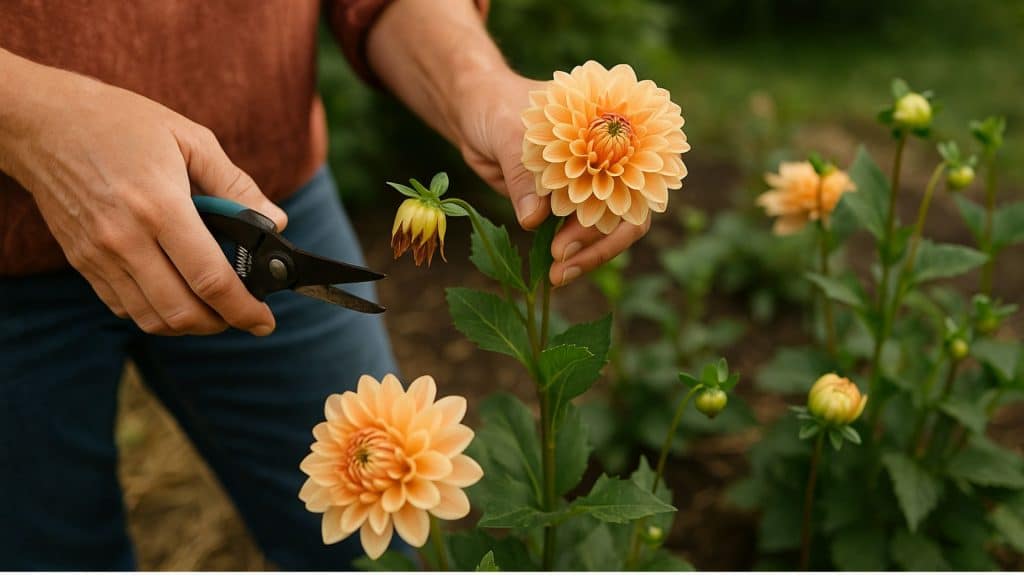
Keep up with weekly tasks like checking for pests and removing spent flowers. Deadheading encourages continuous flowering throughout the growing season. Water deeply if rainfall is less than one inch per week.
Watch for common pests like aphids or spider mites early. Add fresh mulch monthly to retain moisture and suppress weeds. Regular maintenance keeps plants healthy and productive all season long.
Step 6: Harvest Beautiful Blooms
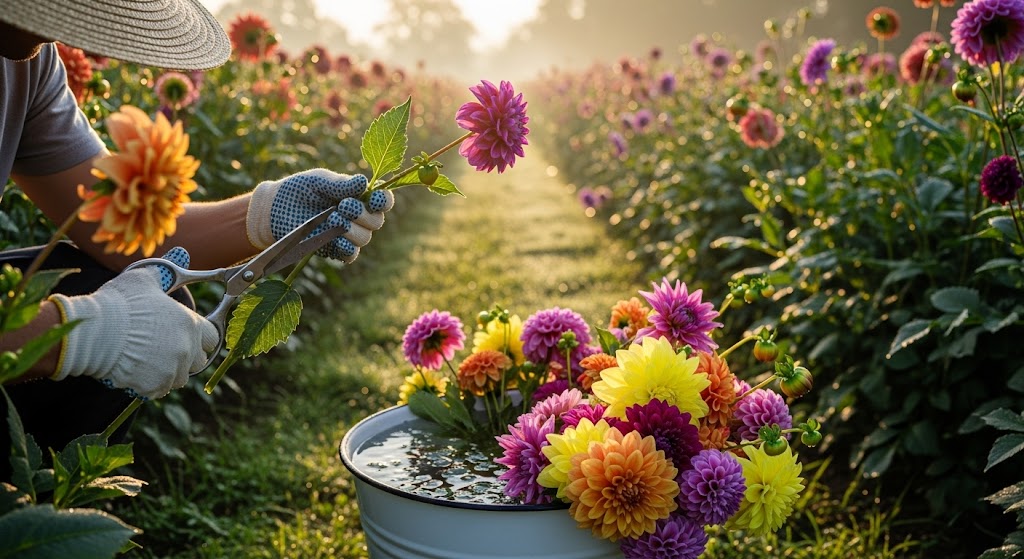
Most dahlias start flowering 8-10 weeks after planting, providing months of beautiful cut flowers. Cut stems early morning when they’re full of water using sharp, clean scissors for best results.
Make cuts at angles under running water and place stems immediately in cool water. The more you cut, the more flowers your plants produce. Don’t hesitate to bring gorgeous bouquets indoors.
Step 7: Prepare for Winter Storage

After the first frost blackens foliage, it’s time to prepare for next year’s garden. Cut stems back to 4-6 inches and carefully dig up tubers in cold climates for proper winter storage.
Clean off excess soil and let tubers dry for several days. Store in cool, dry places over winter, checking occasionally. In warmer zones, leave tubers in the ground with thick mulch protection.
Following these seven steps gives you the best foundation for dahlia success. Remember, gardening is about learning and experimenting; each season teaches you something new about growing these lovely flowers.
Dahlia Care Tips
Once your dahlias are growing strong, they need consistent care to produce those show-stopping blooms. Think of it like tending to a prize athlete – regular attention keeps them performing at their best all season long.
- Watering: Water your dahlias deeply once or twice per week rather than giving them daily sprinkles. Check soil moisture by sticking your finger 2 inches deep – if it feels dry, it’s time to water.
- Fertilizing: Feed your dahlias with a balanced fertilizer once a month during the growing season. When flower buds start forming, switch to a fertilizer that’s lower in nitrogen and higher in phosphorus to encourage more blooms.
- Staking: Install sturdy stakes when your dahlia plants reach 12 inches tall before they get too heavy and start leaning. Use 6-8-foot stakes for tall varieties, driving them 12 inches into the ground about 6 inches away from the plant base.
- Deadheading: Remove spent flowers regularly by cutting the stem back to the next set of leaves or side buds. This simple task keeps your plants looking tidy and tricks them into producing more flowers instead of going to seed.
These four care practices work together to keep your dahlias healthy and blooming from summer until frost. Consistent attention to these basics will reward you with months of spectacular flowers.
Managing Pests and Diseases
Dahlias are generally healthy plants, but a few common problems can pop up during the growing season. Catching issues early and knowing what to look for keeps your plants thriving and blooming beautifully.
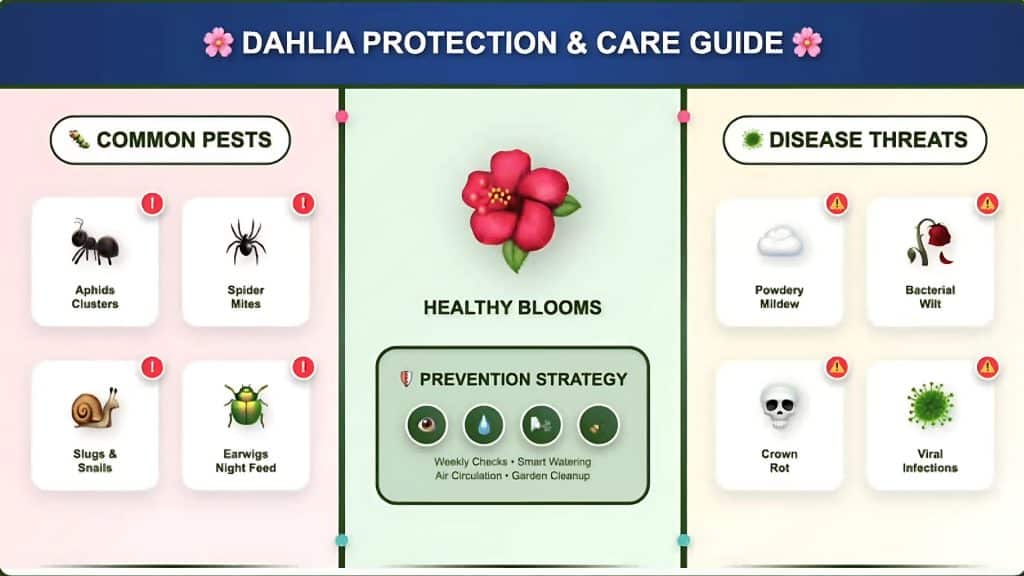
With vigilant care and quick action, you can keep your dahlias healthy and blooming beautifully. Remember, prevention is always easier than treatment, so regular monitoring pays off in the long run.
Conclusion
Growing dahlias successfully comes down to timing, location, and consistent care.
When you follow these proven steps from waiting for 60°F soil temperatures to proper winter storage, you’ll enjoy months of spectacular blooms that keep getting better as fall approaches.
The key is patience at the start and attention throughout the season. Water wisely, stake early, feed regularly, and watch for pests. Your efforts will pay off with flowers that outshine everything else in the garden.
Want to take your dahlia growing to the next level?
Start planning your tuber varieties for next season now. Consider trying different sizes and colors to create stunning combinations.
Share your dahlia success stories in the comments below. We’d love to hear about your blooming victories and learn from your experiences.
What dahlia variety will you try first this growing season?
Check out more posts on plant care and growing tips.
